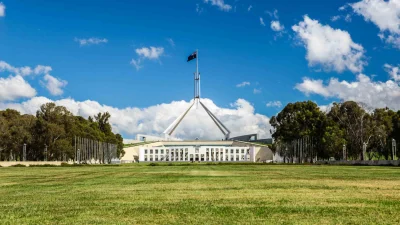Going for growth
Growth pensions will get the official seal of approval — it’s no longer a question of if, according to some industry experts, it’s just a question of when.
Investment and Financial Services Association (IFSA) CEO Richard Gilbert seems more confident than anyone.
“The Government put in a review of growth pensions as an election promise and this Government has systematically endeavoured to deliver its promises. It will deliver a review and the outcome will be positive because the case is so compelling.”
David Shirlow, Macquarie’s technical manager is almost as enthusiastic.
“I’m going to Canberra in the next week or two to discuss with Treasury the results of the modelling. The fact that Treasury has turned its eye to the growth pension model, analysed it, is obviously a prerequisite for growth pensions becoming government policy.”
There are a number of things for Treasury to like about the current growth pension model (see The growth pension model, right).
Growth pensions enable retirees to invest in growth assets, which should, in the long term, produce good returns and translate to better income streams, which should in turn, reduce the pressure on age pensions.
And the fact that growth pensions have a nil residual capital value by the end of their term means retirees are forced to draw down from their own funds rather than preserving them — once again relieving pressure on the age pension.
But Colonial First State’s technical guru Peter Hogan believes that while retirees will favour growth pensions, until now, Treasury plainly has not.
“Treasury up until now has taken, in my view, a fairly paternalistic approach and said retirees need capital guaranteed income streams and I just think that’s rubbish. If you look at what retirees invest their money in, the vast majority of the money goes into allocated pensions, which are investment linked.”
The real sticking point for Treasury, of course, is that the industry wants the growth pension to be granted complying pension status (exemption from the assets test) which is, Hogan acknowledges, “quite a big step”. But as the incomes test still applies, he is hopeful that the government will be satisfied that it can manage access to social security entitlements.
“The incomes test will limit access to people with substantial amounts of money,” he says.
“This is an opportunity for the Government to take control of what’s happening in the market at the moment by legislating.”
And there are some pretty compelling reasons why the Government is likely to take that opportunity.
First of all, as Hogan points out, there are other strategies in the market (through self-managed superannuation funds) that are effectively doing what a growth pension does anyway.
Secondly, as evidenced by the launch last month of Challenger International’s growth pension alternative RetireEasy, product providers are tired of waiting — so a growth pension seems likely to happen by default, with or without legislation.
As Challenger’s managing director, Bill Ireland points out, “Just by taking what’s on the shelf at the moment, structuring them and putting them together in a certain fashion you’ll achieve what a growth pension was endeavouring to achieve. What we’ve done over the top of that is put it in one brochure. It’s not breaking any rules — the products are already out there in their current form.”
And there’s a third reason Treasury might act sooner rather than later.
In its submission to the Senate Select Committee on Superannuation in May this year, the Industry Funds Forum (IFF) made a submission that included a suggestion that the definition of a complying pension be amended to include allocated pensions.
Obviously, granting complying status to allocated pensions has the potential to create an even bigger hole in the age pension budget than granting complying status to growth pensions. The IFF might be drawing a long bow, and the Shadow Minister for Retirement Incomes and Strategy Senator Nick Sherry says it’s too soon for him to comment — but what if the Labor Party should champion the IFF cause? It’s a political risk the Government probably isn’t prepared to take.
All of these factors make the industry fairly certain the Government will make an announcement in relation to growth pensions, but the million-dollar question is still when that might be.
Hogan says the industry was supremely confident prior to the Federal Budget that there would be an announcement and it didn’t happen.
But confidence is again riding high, boosted by statements from various Government ministers and people involved with setting superannuation policy saying growth pensions are on the agenda.
“Unfortunately when the Government announced this, it didn’t set a timetable,” Hogan says.
“I think we’re a lot closer now to an agreement than we were a year ago. But whether it’s before Christmas or whether it’s the next federal budget, I don’t think anyone could predict at this stage.”
Recommended for you
Shadow financial services minister, Luke Howarth, has stressed the Coalition’s commitment to reforming the CSLR, adding that he ultimately wants to “get rid of it”.
With just over three weeks until the federal election, the FAAA has put a reduction in red tape and further support for new entrants on its priority list for an incoming government.
The corporate regulator has issued infringement notices to three AFSLs whose financial advisers provided personal advice to a retail client while unregistered.
Rather than taking a controlling approach, the latest generation of overseas private equity deals is helping advice firms to achieve their growth ambitions, three commentators have said.














